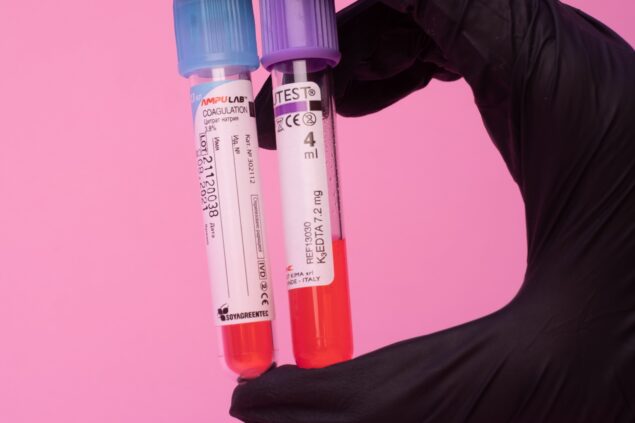Explainer Episode 48 – The FDA & the Practice of Medicine: Possible Regulation of Off-Label Prescriptions

On December 29, 2022, President Biden signed the Consolidated Appropriations Act, 2023 into law. This omnibus law is over 4,100 pages, and, like many omnibus bills, affects a broad range of issues.
According to Dr. Joel M. Zinberg, physician and health care expert, one such issue is the practice of medicine, as a nineteen-line section relating to the authority of the Food & Drug Administration (FDA) may fundamentally change the future viability of off-label prescriptions. Dr. Zinberg joins us in this podcast to explain the Act’s provisions concerning the FDA, the possible implications on the practice of medicine, and possible solutions to the potential pitfalls posed by these new health care provisions.
Transcript
Although this transcript is largely accurate, in some cases it could be incomplete or inaccurate due to inaudible passages or transcription errors.
[Music and Narration]
Introduction: Welcome to the Regulatory Transparency Project’s Fourth Branch podcast series. All expressions of opinion are those of the speaker.
Chayila Kleist: Hello, and welcome to the Regulatory Transparency Project’s podcast. My name is Chayila Kleist, and I’m Assistant Director of the Regulatory Transparency Project. Today, we are delighted to host Dr. Joel Zinberg for a discussion on the FDA and the practice of medicine and possible future regulation of off-label prescriptions.
As always, please note that all expressions of opinion are those of the expert on today’s program. And The Federalist Society takes no position on any particular legal or public policy issues. Dr. Zinberg, thanks so much for being with us today. We appreciate you taking the time.
Joel Zinberg: My pleasure. Thanks for having me.
Chayila Kleist: For our audience, Dr. Zinberg, M.D., J.D., is a senior fellow at the Competitive Enterprise Institute, and director of the Paragon Health Institute’s Public Health and American Well-Being Initiative. He’s a native New Yorker who has recently completed two years as general counsel and senior economist at the Council of Economic Advisors in the Executive Office of the President. Further, he practiced clinical and oncologic surgery in New York for nearly 30 years at the Mt. Sinai Hospital and Icahn School of Medicine where he is an Associate Clinical Professor of Surgery.
He has been involved with health policy issues and the interaction between law and medicine his entire career. To that end, Dr. Zinberg taught for ten years at the Columbia University Law School as a lecturer in law, where he created a course on the legal, policy, and ethical issues surrounding organ transplantation. He has also served for many years on the New York State Board of Professional Medical Conduct, and at Mt. Sinai’s ethics committee and institutional review board. He is past president and trustee of the New York County Medical Society.
Dr. Zinberg has also written for publications as varied as the Journal of the American Medical Association, the Bulletin of the American College of Surgeons, the Wall Street Journal, City Journal, and law reviews. Now, while there’s more to say, in the interest of time, I’ll cut my introduction there. If you’d like to know more about Dr. Zinberg, please feel free to check out his full impressive bio at regproject.org.
With that, however, we’ll turn to our discussion. Dr. Zinberg, let’s start at the beginning. Before we get into the recent statutory changes, what are off-label prescriptions? How common are they? And why might a medical practitioner prescribe something off-label?
Joel Zinberg: So, to understand your question, you have to know a little bit about how the drug and devices are approved by the FDA. Under the Food, Drug, and Cosmetic Act, before a prescription of a medical product can be marketed in the United States, it’s got to be FDA approved or cleared to be labeled for at least one intended use. So what the FDA does is it reviews the manufacturer’s application for proof that the product is safe and effective for the intended use that’s listed in the labeling submitted by the applicant. So the FDA will only approve drugs or devices in the context of labeling for their intended use. It does not regulate how these products are going to be prescribed or used.
So, there’s a label. It lists the intended uses. And anything that is prescribed for something that’s not listed as the intended use is considered an off-label use. It’s considered the practice of medicine. And, traditionally, the FDA does not regulate the practice of medicine. There’s even a specific code section entitled “Practice of Medicine” that says that the FDA will not regulate the practice of medicine. And there are multiple court decisions and scholarly articles dealing with these issues, which made pretty clear that the FDA will not regulate the prescription or use of these off-label uses, because that falls under the practice of medicine.
So, in essence, what the FDA is controlling is the availability of drugs and devices. But once they sign off with at least one intended use, the product can be used for anything within the practice of medicine. And the practice of medicine, under our constitutional system, is traditionally regulated by the states, not by the federal government.
Chayila Kleist: Got it. So, as a medical practitioner is undergoing the practice of medicine, what are the dangers and advantages of prescribing something off-label?
Joel Zinberg: Well, the reality is that off-label uses is very, very, common. The fact is, at least one in five prescriptions are written for an off-label use. And, in some fields, off-label use is really the rule, not the exception. So, for example, in oncology, the standard of care for specific types or stages of cancer often includes the off-label use of one or more drugs. And off-label uses are routine in pediatrics, where there are a variety of logistical challenges to conducting trials and seeking FDA approval for these large trials. So pediatricians will often take drugs that are approved in the adult setting, and adapt them for use in the pediatric setting.
So the importance of this whole process is that this is how medical practice knowledge advances. Once there’s a drug approved, it gives physicians the opportunity to apply their knowledge of evolving science and to look at a specific instance and the specific circumstances of a treatment of a particular patient and say, “Hey, maybe there’s something about this drug or this device that, even though it’s approved for another use, would be useful in treating this patient.”
And what happens is they try to use it in that patient. They see if it works or not. But if it does work, they may try it again. They may tell their colleagues. They may publish an article about it. If it seems promising, then that generates a hypothesis that this is something that’s going to be useful for this other use. Studies will get conducted. They get published. And, sooner or later, if it’s really useful, this becomes the standard of care. And this is extremely common in medicine. And it’s how medicine advances.
And, in fact, the FDA has acknowledged this, as far back as 1982, in one of their drug bulletins, that they then cited approvingly. Back in a 1984 federal register notice they wrote — and here I’m quoting — “Valid new uses of drugs already on the market are often first discovered through serendipitous observations and therapeutic innovations, subsequently confirmed by well-planned and executed clinical investigations.”
So the FDA knows that this is how science works, and how medicine works. And it’s somewhat dangerous to interfere with that process.
Chayila Kleist: Okay, got it. So, with that background in play of sort of what off-label prescriptions are and how they are made used in the practice of medicine, let’s turn to the recent statutory changes that may affect this. You contend that this practice of off-label prescription may come under threat by the FDA in light of a recent 19-line section of the 2023 Consolidated Appropriations Act, which amended the Food, Drug, and Cosmetic Act, or FDCA. What did that section of that Consolidated Appropriations Act do to the FDCA?
Joel Zinberg: Right. So, basically, as you referred to, it’s 19 lines in the 4155-page 2023 Omnibus Appropriations bill. A skeptic might, or a cynic might say, “Gee, did they sneak this in there?” I don’t know. I can tell you, in discussions with some legislators, some of them didn’t even know it was in the bill, all right? But, anyway, there it is. It’s in the bill. And what it does is it amends Section 360 (f) of the Food, Drug, and Cosmetic Act.
And what that section did is allowed the secretary to ban a device if that device proved to be unreasonably dangerous, or the exact language is “an unreasonable and substantial risk of injury and illness — illness or injury,” excuse me. And they could ban a device that had previously been approved. And the question was, as presented in a 2021 case, Judge Rotenberg Educational Center Inc. v. FDA, was could the agency ban an approved device for a particular use, yet keep it on the market for other uses. And, as I said before, the rule had always been that once a drug was on the market for an intended use, it could be used off-label for other uses.
So, in that particular case, what had happened was a mental health treatment facility in Massachusetts, named Judge Rotenberg Educational Center, was utilizing an electrical stimulation device for the treatment of people who had self-injurious behaviors, things like biting, head-banging. And they were using it for about 20, 30 patients a year, for whom all of the therapeutic alternatives had been exhausted. They had tried behavioral therapy. They had tried medications. And these were not working. And they were using it for that use. And, in fact, they were probably the only place in the country using it for that. And they became something of a referral center for these unfortunate types of patients.
Meanwhile, this was a device that was used in other contexts for treatment of various addictions, things like smoking and drug and alcohol abuse. So, it was being used around the country for that, but Judge Rotenberg was the only place that was using it. And there were a bunch of activists who were very upset by this, and they petitioned the FDA. And the FDA, as far back as 2016, was considering a rule that would ban the use of the device for self-injurious behaviors. But it wasn’t until 2020 that they issued the final rule.
And what happened was, interestingly, the Center challenged that rule as being contrary to the statute. Not only did the Center, though, the parents of these unfortunate patients, the families, the parents joined the lawsuit, because they said that this is the only thing that was working for their loved ones. And they did not want it to be banned. And the basis of the lawsuit, and, really, the basis of the final ruling in the case — because the case ended up being decided in 2021 — was that it violated a different section of the Food, Drug, and Cosmetic Act that deals with the practice of medicine.
And that section specifically says — and that’s Section 396, 21 U.S. Code 396 — that section, which is entitled, “Practice of medicine,” says, “Nothing in this chapter shall be construed to limit or interfere with the authority of a healthcare practitioner to prescribe or administer any legal marketed device to a patient for any condition or disease, within legitimate healthcare practitioner-patient relationship.”
So, in other words, this was going to be up to the physician and their patient to make this decision. And the court held that you can’t ban for one use while you leave it on the market for other uses. You either have to follow the statute that says you can ban it because it’s dangerous, or you have to leave it on the market. So what the 19 lines did, in the new statute, was say that now they can ban a device that poses an unreasonable risk for one or more intended uses. And they can ban those uses while leaving it approved for other uses.
So, it was really very much directed towards the issue in that case. In fact, earlier, there had been attempts to include that language in an earlier FDA reauthorization bill, and included language specifically directed towards the electrical stimulation device. It failed in the earlier bill. And then, in the Omnibus Appropriations bill, they took out the language directed towards the electrical stimulation devices, but they did leave in the broader language allowing the FDA to ban for one or more intended uses.
So, it creates a problem here in the device space. And that’s the genesis there. But it also raises the possibility that the FDA will now try to do this in the drug space, if there’s a drug that’s unpopular or unused, or they don’t want it used, that they’d do it. And, of course, people are concerned now, in the context of the— I guess, now, officially over, or almost officially over — pandemic. There were certainly calls to limit the use of particular drugs that, for a variety of reasons, became popular in some areas of practice, but then proved to be ineffective. But there were really calls. And it became, really, very much a political football.
And, of course, I’m thinking specifically of things like hydroxychloroquine or ivermectin, which were drugs which some people were advancing, thinking that these were effective. And then, official medicine and the CDC and the FDA were saying, “No, these are not.” And it became very much a political football. But this might open the door to that sort of banning activity.
And I would argue that this is — the system actually worked in this setting. Because hydroxychloroquine and ivermectin were not drugs that were advanced out of the blue. They were drugs that were known to have anti-inflammatory properties. They were used off-label for just that purpose, in a variety of settings. And people knew, early in the COVID pandemic, that a big problem with COVID is an intense inflammatory reaction that people have. In fact, that was thought to be probably what distinguished severe cases of COVID from milder cases of COVID.
So they said — there were no treatments available — “Let’s try these drugs.” And they were tried. First, as I described, in a sort of haphazard, individualized setting, but, eventually, studies were done. And the studies revealed that the drugs didn’t work that well. And they were abandoned by most of medicine for just that reason. That’s the way medicine works. In fact, just a week or two ago, in the Journal of the American Medical Association, you saw publication of the similar process for an antidepressant drug, Fluvoxamine, which was, again, initially thought might be helpful in the setting of COVID. They did a study, showing it wasn’t worthwhile in that setting.
So, this is how things work. And it should be something that evolves medically. But once you create this specter of the FDA stepping in and dictating things — and, unfortunately, as we saw, many of these decisions because very politically charged — I think you’re going to have a chilling effect on medical innovation, because people will be much less likely to be willing to experiment in particular settings that would lead to more generalized knowledge.
Chayila Kleist: Got it. I have interest in two aspects of what you just said. I’ll revert more to the statute and clarifying some of that before moving to the latter part of your argument. But, to the statute — and you’ve touched on this a little bit — as I understand it, the statute, and the case that seems to have prompted it, particularly to address whether the FDA can regulate particular uses of medical devices — for purposes of what the FDA can do, in light of the statute, and our conversation today on drugs — is there a pertinent difference between medical devices and drugs?
Joel Zinberg: Well, there’s no exact analog in the statute for banning drugs, the way there is for banning devices. And, by the way, nor is there an exact analog on the practice of medicine. Because that practice of medicine thing is found in the device section of the statute. Nevertheless, the FDA has shown, over the years, that it is very keen on regulating promotion of off-label uses, and, potentially, the off-label use of various drugs.
So, for example, we go back to 2012. There’s a well-known case where the FDA went after — U.S. v. Caronia is the name of the case — where the FDA went after a pharmaceutical representative who discussed off-label uses with a physician. And the ruling in that case, in the Second Circuit Court of Appeals, was that to do so, to suppress information that was truthful and not misleading would violate the First Amendment.
But that doesn’t mean that the FDA has not continued to do that sort of thing and discourage off-label promotion. And they’re, again, not too keen on off-label uses, if they can control it. So, it’s not too much to think that the FDA would then try to use this as a precedent to ban or discourage the off-label use of certain drugs. Basically, what the FDA normally does — the FDA has other avenues when it discovers something is dangerous in a particular setting. It can issue public warnings. It can create a black box warning on the label, which goes out to all prescribers of the drug, saying, “Be careful in this sort of setting. This is a particular danger.”
It can even go as far as withdrawing the new drug application and getting the drug off the market, based on new information. So, the FDA has always had a variety of ways of approaching this. And the reality is, if you’re a big company dealing with the FDA, you want to stay in their good graces. So, the FDA has a lot of clubs, basically, behind the scenes, that companies are not terribly anxious to violate or go up against, because they have to go back to the FDA with other drugs somewhere down the line. So they want to stay in the FDA’s good graces.
But it’s really the issue of creating this sort of precedent where you’re going to ban specific devices or ban, potentially, specific drugs, that I think is dangerous to innovation. And that’s really why I have written about this, and what I think the danger is. And there are people now who are sort of waking up to this issue, and pushing back a bit.
Chayila Kleist: Fair enough. Thanks for the clarification on what the differences might be, and on why it still can affect both. Turning to your argument, in a recent op-ed in the Wall Street Journal, and here I quote, “The agency,” that is, the FDA, “will likely claim this change in the FDCA as precedent allowing it to ban off-label uses of drugs as well.” That’s much of what you’ve been covering in this podcast. You’ve touched on some of why you think that is, and why the FDA might want to ban such prescriptions, whether that be for political reasons or otherwise.
Since I know your perspective on some of the implications of the possibility — some of which you’ve laid out — I’ll actually ask you to answer the opposite question first. What benefits might there be from the FDA getting involved in this manner, and only banning particular reasons for prescribing a drug?
Joel Zinberg: Well, I don’t know that there really are. In other words, look, the reality is, the FDA gets reports about adverse reactions, and they can communicate that information to the medical community. But I would argue that the medical community is in a better position to look at the unique circumstances of a particular patient and decide whether or not the drug might be beneficial, or the device might be beneficial in that setting. That’s not something that the FDA — a bureaucracy sitting in Washington — is particularly well-suited to do. They are well-suited to collect data. They are well-suited to disseminate that data.
And then, individual practitioners, along with the consent of their patients, can apply that data and figure out what’s appropriate in a particular setting. But I think preserving the sanctity of the practice of medicine is a very important principle, and one that we should strive to preserve, that the FDA should not be getting involved in specific uses.
Chayila Kleist: Understood. Okay, well, then, turning to the other side, assuming this does happen, and a physician, or a group of physicians think that the FDA has banned the off-label prescription of a particular drug in error, what might their recourses be, under the current system of things?
Joel Zinberg: Well, just like the Judge Rotenberg Center, they may end up in court saying, “Does the statute give the agency the authority to do this?” Now, of course, what’s happened — I wrote an article about the Rotenberg case about a year or two ago. And I said, of course, the agency is free to go back to Congress and ask them to amend the statute. And that’s precisely what they did. So now they have the authority — at least, certainly, clearly, in the device sphere — to ban specific uses.
So, I think, ultimately, the recourse for physicians and physician groups and patient groups is to go to Congress and say, “Hey, you know, this really wasn’t such a good idea. We’d like you to amend the FDCA and take out this authority to ban specific uses, because this is going to impair the practice of medicine and it’s going to impair clinical innovation.”
Chayila Kleist: Got it. And, thinking of paths forward, it seems that it’s perhaps an issue of a statute, at this point, since it’s a statutory change that has allowed for regulatory possibilities. Is there regulation that would affect this? Something else entirely? Or is that the main path forward?
Joel Zinberg: Well, look, obviously, the statute governs, although one wouldn’t necessarily know that from the past 50 years of administrative law expansion. But if the statute specifically addresses the issue, a regulation does not trump that. Now, as I said, there are regulations that the FDA has issued, dealing with the practice of medicine, and dealing with specific uses of drugs. But the area where it’s specifically addressed in the statute is for devices. But, nevertheless, I do think this creates a precedent that is important that it be addressed by Congress, in terms of potentially repealing these 19 lines and reverting to what was the status quo.
Chayila Kleist: Got it. Well, thank you. We’ll wrap it there. Dr. Zinberg. Thank you so much for being with us today and sharing your expertise and your insight. For our listeners, thank you for tuning in. And if you’d like to find more content like this, please feel free to check out regproject.org. Again, thank you so much. May you have a great day.
[Music]
Conclusion: On behalf of The Federalist Society’s Regulatory Transparency Project, thanks for tuning in to the Fourth Branch podcast. To catch every new episode when it’s released, you can subscribe on Apple Podcasts, Google Play, and Spreaker. For the latest from RTP, please visit our website at www.regproject.org.
[Music]
This has been a FedSoc audio production.

The Federalist Society and Regulatory Transparency Project take no position on particular legal or public policy matters. All expressions of opinion are those of the speaker(s). To join the debate, please email us at [email protected].








